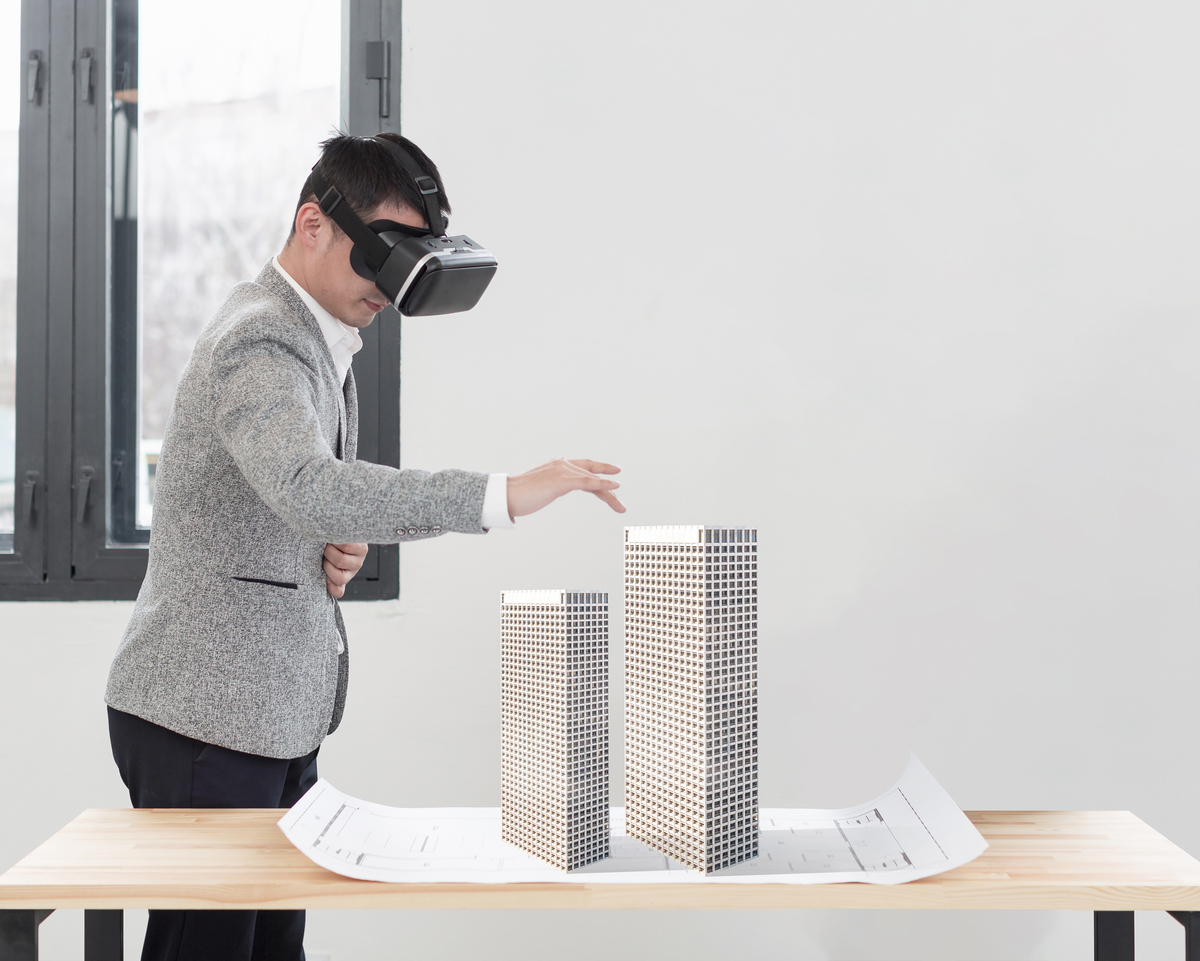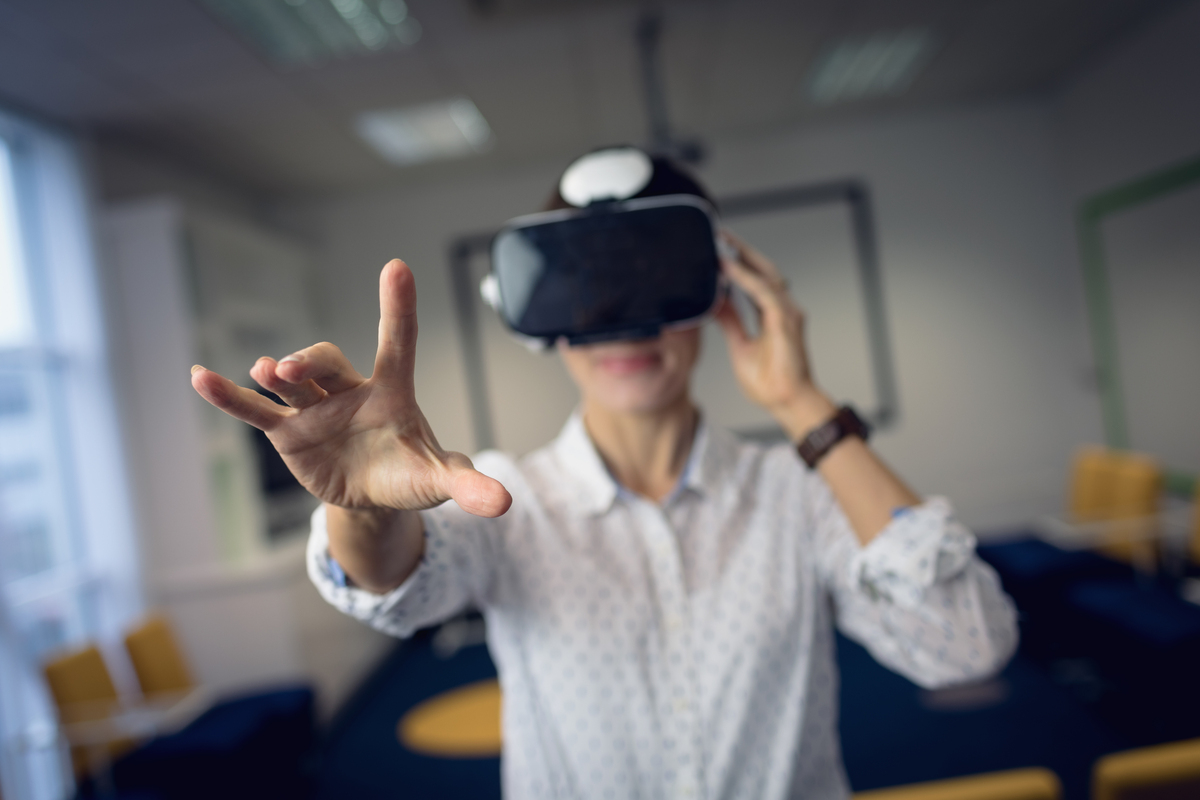Exclusive Neuroject Article: In an industry as dynamic and challenging as construction, innovative technology continues to redefine its operational landscape. The recent emergence of Augmented Reality (AR) as a viable tool within this field has brought about a paradigm shift, revolutionizing the way projects are planned, managed, and executed. The integration of AR in Construction embodies a significant breakthrough; it streamlines processes, reduces errors, and significantly boosts efficiency.
This article seeks to explore the transformative impact of Augmented Reality in Construction. We delve into how this cutting-edge technology merges digital and physical environments, enabling construction professionals to visualize and interact with project models in real-time. From design visualization to worker safety, this immersive technology offers a wealth of advantages.
The subsequent discussion illuminates the ways in which AR is reshaping construction, moving it closer to an era of unprecedented precision and productivity. As we journey through the AR-construction interface, we aim to unlock an understanding of the magnitude of change it presents, and the potential it carries for the future of construction.
Table of Contents
Explore the Impact of Augmented Reality in Construction (2024)
The AR/VR market has seen substantial growth, with a Compound Annual Growth Rate (CAGR) of 77% from 2019 to 2024. Though AR has already begun to make a significant impact across numerous sectors, its potential remains largely untapped. As technology advances, AR stands at the cusp of revolutionizing the way we interact with digital data, influencing everyday life, and transforming industries on a large scale.
Using advanced AR in Construction, such as headsets, smart glasses, or mobile devices, users can view and manipulate digital content in their actual surroundings. This fusion offers an immersive experience that goes beyond traditional screen-based interaction.
Contrary to Virtual Reality (VR), which immerses users in a wholly synthetic environment, AR enriches the real world, maintaining users in their context. This feature significantly contributes to AR’s versatility, making it applicable across numerous sectors, including education, healthcare, military, retail, entertainment, and construction.
In the realm of retail, brands are using AR to enhance the online shopping experience, allowing consumers to visualize how an item might fit into their environment. In healthcare, AR aids in visualizing organs and simulating procedures, with surgeons leveraging AR to project 3D representations of patient anatomy, improving accuracy and outcomes.
Moreover, AR in Construction is bringing substantial changes. Utilized appropriately, AR can boost project wins, facilitate team collaboration, and improve safety measures. To effectively use Augmented Reality in Construction, a firm understanding of the technology’s capabilities and uses is required.
As we continue to delve into the information age, the role of AR in shaping the future grows increasingly significant. It’s more than novelty or entertainment; it’s about redefining how we perceive and engage with the world. With each advancement, AR redefines our understanding of reality, signifying a new era in human-computer interaction.

Historical Overview and Evolution of AR in Construction
Augmented Reality (AR) has come a long way in the construction industry, with roots traceable to the 1960s when Ivan Sutherland developed the first head-mounted display system. However, its applications in construction did not become apparent until the 1990s. The initial applications of AR were limited due to technological constraints, and primarily used for visualization and demonstration purposes.
With the dawn of the 21st century, there was a significant shift in how Augmented Reality in Construction was perceived and used. Advanced computer hardware and software began to support more complex AR applications. Companies started to explore AR to visualize construction models and as a means to detect errors and resolve them in the design phase. This led to reducing cost and time overruns, thereby increasing the appeal of AR in Construction.
In 2010, AR gained momentum with the proliferation of smartphones and the development of mobile AR apps. Companies started to use AR to overlay virtual 3D models onto the physical world, allowing project managers and architects to visualize the final product in a real-world context before construction began.
The next big leap for Augmented Reality in Construction came in 2016 with the launch of Microsoft’s HoloLens. This mixed-reality device paved the way for new possibilities, allowing users to interact with holographic content on the job site. Workers could now spot discrepancies between the design and actual construction, improving the accuracy and efficiency of the construction process.
In the current scenario, AR in Construction is growing at a phenomenal rate. Digital twin technology, AI, and machine learning have started working in harmony with AR to create more intuitive and immersive experiences. For instance, safety training in construction sites is now being carried out through AR, immersing trainees in a controlled environment and providing a real-world understanding of potential hazards.
In summary, AR’s evolution in the construction industry has been marked by progressive advancements, each phase bringing increased efficiency, safety, and accuracy to construction projects. From its humble beginnings to its current state, AR has shown the potential to revolutionize the construction industry. The journey of Augmented Reality in Construction is a testament to the transformative power of technology and innovation in driving the industry forward.
Suggested article for reading: Artificial Intelligence or AI in Construction

How is Augmented Reality Used in Construction?
Augmented Reality (AR) has significantly revolutionized the construction industry, providing innovative solutions that improve efficiency, safety, and project management. Here are some specific applications:
1. Design Visualization: AR in Construction enables professionals to bring their designs to life in real-world settings. Rather than relying on 2D blueprints or 3D models, architects and engineers can place a full-scale virtual model of a structure on a future building site. As an example, a construction manager can utilize AR glasses to overlay a building design onto a vacant lot, providing stakeholders with a realistic impression of the proposed construction.
2. Virtual Walkthroughs: This technology offers a dynamic method for exploring designs before the commencement of construction. By using devices equipped with AR, architects and clients can conduct a virtual tour of the proposed structure, facilitating a thorough understanding of the design and layout. A practical demonstration of this would be an architect employing this immersive technology to provide clients with a virtual tour of a house’s interior, enabling alterations to be made to the design before the actual construction begins.
3. Structural Analysis: AR in Construction permits real-time structural examination by superimposing structural data onto the physical environment. To illustrate, a structural engineer could employ an AR headset to observe a building’s foundation, accessing real-time data about weight load and stress points. This application of the technology can assist in the early detection and rectification of structural issues, minimizing potential repair costs in the future.
4. Training and Safety Drills: This innovative technology contributes to immersive training and safety drills. Workers can practice managing potentially hazardous situations in a safe, virtual environment. For instance, construction personnel can simulate working at heights using AR, allowing them to gain confidence and familiarize themselves with safety measures without real-world risks.
5. Project Management: AR in Construction is beneficial in streamlining the construction process by visualizing project timelines, task assignments, and resource allocations. A project manager, for example, could utilize AR to superimpose a timeline on an ongoing construction site, visually monitoring progress against scheduled deadlines.
In conclusion, AR offers practical solutions in construction, ranging from design and planning to safety and project management. As the technology continues to advance, its applications in this sector are set to increase.

Impact of AR in Construction on Efficiency and Productivity
Consider a construction project where AR glasses are used. These glasses project 3D models of the building onto the physical site, offering a real-time visualization of the final product. Workers can identify discrepancies between the model and the physical construction instantly, reducing the likelihood of expensive rework and saving time, thereby enhancing productivity.
Moreover, Augmented Reality in Construction provides a platform for effective communication and coordination among different stakeholders. For instance, architects, engineers, and construction workers can use AR to share insights and updates on a project. In a real-world example, a construction company named XYZ reported a 20% increase in efficiency when they incorporated AR in their communication processes.
AR can also be used for training purposes, leading to improved skills and reduced errors. For instance, new employees can use AR simulations to learn the nuances of their work, reducing the learning curve and boosting productivity. In one case study, a construction firm reduced its training period by 30% through the implementation of AR.
Finally, AR aids in safety management, a critical aspect of construction projects. With AR, potential hazards can be identified and addressed early, reducing workplace accidents and downtime.
In conclusion, Augmented Reality in Construction is not merely a futuristic concept; it’s a practical solution that has shown to drive efficiency and productivity. From visualization to communication, training, and safety management, AR offers a range of applications that streamline construction processes, leading to significant savings in time and resources.

The Economic Impact: Cost-Benefit Analysis of AR in Construction
The application of Augmented Reality (AR) in the construction sector is an innovative move that has significant economic implications. A Cost-Benefit Analysis can help provide a comprehensive understanding of its financial impact.
On the cost side, implementation of Augmented Reality in Construction entails investment in AR hardware and software, staff training, and regular maintenance. However, these costs should be seen as an investment rather than an expense due to the high potential return on investment (ROI).
For instance, one of the major benefits is the reduction in design errors. By using AR in Construction, architects, and engineers can overlay virtual models onto real-world environments, improving design accuracy and reducing rework. A report by McKinsey estimates that the global cost of rework due to design errors is around $500 billion annually. Even a modest reduction in this through AR can lead to significant savings.
AR also improves client engagement. For example, a client can take a virtual tour of their building before construction starts. They can propose changes early on, reducing alterations during construction that can be costly. This proactive approach enhances customer satisfaction, potentially leading to more business.
AR enhances worker safety and productivity. Using AR in Construction, workers can visualize potential hazards before they materialize. The US Occupational Safety and Health Administration (OSHA) reports that accidents cost businesses billions annually. By mitigating risks, AR can lower these costs considerably.
Moreover, AR promotes efficiency by simplifying complex tasks. For instance, an AR app can guide a worker in installing an HVAC system, reducing the time taken and minimizing errors.
Overall, the economic benefits of Augmented Reality in Construction outweigh the costs. It reduces expenses tied to errors and accidents, enhances productivity, and improves client engagement. Businesses considering AR adoption should conduct a thorough cost-benefit analysis, considering both tangible and intangible benefits, to make an informed decision.

AR and Construction Management: An Emerging Symbiosis
Augmented Reality (AR) is revolutionizing the construction industry, opening up a myriad of new solutions to streamline project management. This innovative technology allows for 3D visualization of construction plans, facilitating seamless project execution while minimizing potential errors.
AR offers an immersive way of planning and visualizing construction projects. Instead of relying solely on traditional blueprints, architects and engineers can use AR to project a three-dimensional model of a proposed structure onto a real-world site. For example, imagine walking through a construction site with an AR-enabled device. You can “see” the final product as if it’s already built, identifying potential issues early on. This not only reduces time spent revising plans but also mitigates costly errors.
AR can also assist with asset management. It can project information about building elements onto an AR device, making it easier for workers to identify parts needing maintenance or repair. Consider a situation where an HVAC unit needs servicing. With Augmented Reality in Construction, a maintenance technician could see a 3D model of the unit with superimposed data such as last maintenance date and performance statistics, facilitating quick diagnosis and solution.
In terms of safety, AR in Construction can offer training simulations to workers, recreating hazardous scenarios without the risk. For example, a simulation could mimic a scaffold collapse. Workers would learn to respond appropriately without being exposed to actual danger. This could significantly reduce workplace accidents.
Finally, AR can enhance client communication. A walk-through of the AR model can give clients a realistic view of the final construction, ensuring expectations align with the planned deliverables. For instance, a client considering a home renovation could “visit” their new kitchen before any actual work begins, making design changes without the associated costs of physical alterations.
In summary, the symbiosis between AR and construction management offers solutions in planning, asset management, safety training, and client communication. As this technology continues to develop, it will undoubtedly play a more prominent role in shaping the future of construction. This innovative blend not only boosts efficiency but also provides a safer and more interactive approach to construction projects.

Challenges and Limitations of AR in Construction
The integration of Augmented Reality (AR) in the construction sector offers numerous advantages including visualization of complex structures, enhanced safety measures, and improved project management. However, several challenges and limitations could hamper its successful implementation.
A key challenge involves technical difficulties. AR in Construction requires advanced hardware and software which may not always align with the existing technology in construction firms. For example, older computer systems might not be able to support AR software. Resolving such issues requires an upgrade in technology, which leads to another concern: cost. The expenses involved in procuring state-of-the-art AR devices and maintaining the software might not be affordable for all construction firms, particularly small businesses.
Scalability is another challenge. AR solutions that work well for small projects may not be as effective for large-scale projects. For instance, an AR system that helps a small team construct a residential building might struggle to coordinate a multi-story commercial building project.
Lastly, the successful adoption of AR in Construction necessitates a digitally literate workforce. This involves training personnel to use AR technology, which can be time-consuming and costly. Consider a site supervisor who’s adept at managing tasks traditionally but has minimal exposure to digital technology. This supervisor would require substantial training to understand and utilize AR effectively, which could slow down work initially.
To overcome these challenges, organizations could approach AR integration incrementally, starting with small pilot projects to gauge feasibility and effectiveness. As for cost, firms might consider leasing AR equipment instead of purchasing outright, providing a more affordable entry point into the technology. There could be partnerships with tech companies to assist with scalability issues. For enhancing digital literacy, blended learning approaches can be adopted, combining traditional face-to-face training with online modules to expedite the learning process.
Thus, while the challenges of implementing caution are significant, they are not insurmountable. With thoughtful planning and strategic partnerships, construction firms can harness the potential of AR in Construction to revolutionize their operations.

Future Trends and Developments
The future of the construction industry lies in harnessing emerging trends and technologies. Augmented Reality (AR) is at the forefront of these, potentially revolutionizing the sector in several ways.
1. Virtual Prototyping: AR will enhance 3D modeling, providing a more accurate and interactive representation of buildings before construction begins. For example, instead of relying solely on blueprints, engineers and architects will use AR glasses to visualize structures in 3D, enabling them to spot design errors and make necessary changes early in the process.
2. Real-Time Project Management: Through AR in Construction, project managers can gain real-time insights into construction progress. For instance, imagine a project manager using an AR headset to walk through a construction site, with overlaying digital images indicating completed tasks, pending work, and potential safety hazards. This enables quicker decisions and improved workflow management.
3. Training and Safety: AR can provide immersive training experiences for construction workers, reducing accidents and improving overall safety. Workers could use AR in Construction to simulate high-risk situations, like operating heavy machinery or working at height, and learn how to respond without actual danger.
4. Maintenance and Repair: Post-construction, AR could facilitate maintenance and repair work. For example, maintenance staff could use AR to visualize the internal structure of a wall or to guide them through complex repair procedures.
5. Client Engagement: AR will enhance client-contractor communication. Rather than interpreting complex architectural drawings, clients could walk through a virtual model of their project, ensuring they have a clear understanding and are satisfied with the proposed design.
However, implementing AR isn’t without challenges, including the need for high-end hardware and the requirement of technical expertise to operate AR tools. Plus, cybersecurity risks need to be mitigated as more data gets digitized. Despite these hurdles, the potential of AR in Construction is vast, and it’s clear that this technology could be a game-changer in the years to come.

Key AR Technologies and Tools in 2023
As of 2023, the landscape of augmented reality (AR) technologies and tools in the construction industry has seen significant advancements, offering innovative solutions to enhance efficiency, collaboration, and overall project management. Here are some key AR technologies and tools that are shaping the construction sector in 2023:
Smart Glasses and Headsets
Smart glasses and AR headsets have become more sophisticated, providing construction professionals with immersive AR experiences. These devices offer hands-free access to digital information and 3D models, improving on-site communication and decision-making.
AR Software Platforms
Comprehensive AR software platforms tailored for the construction industry are gaining popularity. These platforms enable the creation, visualization, and manipulation of 3D models in real-time, fostering collaboration among architects, engineers, and contractors.
Spatial Mapping and 3D Scanning
Advanced spatial mapping technologies and 3D scanning tools allow for the accurate mapping of physical spaces. This is particularly valuable in construction for creating precise digital replicas of job sites, aiding in project planning and design visualization.
Augmented Reality Apps for Mobile Devices
AR applications for smartphones and tablets are becoming more prevalent, providing a cost-effective entry point for AR adoption in construction. These apps can overlay digital information onto the real-world environment, aiding in tasks such as equipment placement, measurement, and project coordination.
BIM (Building Information Modeling) Integration
BIM has become an integral part of modern construction, and AR is increasingly being integrated into BIM workflows. This integration allows stakeholders to overlay BIM data onto physical structures, providing a deeper understanding of the project at every stage, from design to construction and maintenance.
Augmented Reality for Training
AR is being utilized for training purposes in the construction industry. Workers can undergo immersive training sessions using AR to simulate real-world construction scenarios, improving safety awareness and skill development.
Remote Assistance and Collaboration Tools
AR technologies facilitate remote collaboration by allowing experts to provide real-time assistance to on-site teams through AR-enhanced video calls. This is particularly useful for troubleshooting, inspections, and quality assurance.
Digital Twins
Digital twin technology, coupled with AR, is gaining traction. This involves creating a virtual replica of a physical asset or structure, and AR is used to overlay real-time data onto the digital twin. This approach enhances monitoring, maintenance, and decision-making throughout the lifecycle of the construction project.
Augmented Reality Wearables for Safety
Wearables with AR capabilities are being employed to enhance safety on construction sites. These devices can provide workers with real-time safety information, hazard alerts, and navigation assistance, contributing to a safer working environment.
Cloud-Based AR Solutions
Cloud-based AR solutions enable seamless collaboration and data sharing among project stakeholders. This ensures that everyone involved in the construction project has access to the most up-to-date information, fostering better communication and project coordination.
The ongoing development and integration of these AR technologies and tools in the construction industry signifies a transformative shift towards more efficient and collaborative construction processes. As technology continues to advance, the potential for AR to revolutionize the construction sector remains high, offering new possibilities for project optimization and innovation.
Implementation Strategies for Construction Companies
Implementing augmented reality (AR) in construction requires careful planning and strategic considerations. Here are key implementation strategies for construction companies looking to integrate AR into their workflows:
Assessment of Needs and Objectives
Conduct a thorough assessment of the company’s specific needs and objectives. Identify areas where AR can add the most value, such as project visualization, collaboration, or safety improvement.
Pilot Programs
Consider starting pilot programs on smaller projects or specific tasks. This allows the company to test the effectiveness of AR solutions in a controlled environment, gather feedback from users, and adjust before scaling up.
Collaboration with Stakeholders
Involve all stakeholders, including architects, engineers, project managers, and on-site workers, in the decision-making process. Collaborate with them to understand their requirements and concerns, ensuring that the chosen AR solution aligns with the diverse needs of the construction team.
Investment in Training and Upskilling
Provide comprehensive training programs to familiarize the workforce with AR technologies. Upskilling employees ensures that they can effectively use AR tools and maximize the benefits in their daily tasks.
Integration with Existing Workflows
Integrate AR seamlessly into existing workflows to minimize disruption. Ensure that the chosen AR solutions complement rather than complicate established processes, enhancing efficiency and productivity.
Customization and Scalability
Choose AR solutions that can be customized to suit the specific requirements of the construction projects. Additionally, consider the scalability of the chosen technology to accommodate the company’s growth and evolving needs.
Data Security and Privacy Considerations
Prioritize data security and privacy. AR systems often involve the collection and processing of sensitive project data. Implement robust security measures to protect against unauthorized access and ensure compliance with relevant data protection regulations.
Collaboration with Technology Providers
Work closely with AR technology providers and developers. Establish strong partnerships to stay informed about updates, receive necessary support, and influence the development of features that align with the construction company’s requirements.
Change Management
Implement effective change management strategies to address any resistance or skepticism among employees. Clearly communicate the benefits of AR implementation and how it aligns with the company’s goals. Encourage open communication and feedback throughout the process.
Performance Monitoring and Evaluation
Establish key performance indicators (KPIs) to measure the impact of AR implementation. Regularly monitor and evaluate the performance of AR tools in terms of productivity gains, cost savings, and overall project outcomes.
Continuous Improvement:
Foster a culture of continuous improvement. Use feedback from users and project outcomes to refine and optimize the use of AR over time. Stay informed about advancements in AR technology to explore opportunities for further innovation.
Regulatory Compliance
Ensure that the implementation of AR complies with relevant industry regulations and standards. Stay informed about any legal or regulatory changes that may impact the use of AR in construction.
By following these implementation strategies, construction companies can successfully integrate augmented reality into their operations, realizing the full potential of AR to improve efficiency, collaboration, and overall project outcomes.
Regulatory and Ethical Considerations
As construction companies adopt augmented reality (AR) technologies, it is crucial to navigate and comply with regulatory frameworks and address ethical considerations. Here’s an overview of the regulatory and ethical aspects that construction companies should take into account when implementing AR:
Regulatory Considerations
There are some regulations to consider as listed below:
Data Protection and Privacy
AR systems often involve the collection and processing of data, including personal information. Construction companies must comply with data protection regulations such as GDPR (General Data Protection Regulation) or equivalent local laws. Ensure that the storage and handling of data adhere to these regulations to protect the privacy of individuals involved in the construction process.
Occupational Health and Safety Regulations
Construction sites are subject to strict health and safety regulations. Ensure that the use of AR does not compromise the safety of workers or violate any safety standards. Implement AR solutions that enhance safety protocols and provide real-time hazard information.
Intellectual Property Rights
Construction projects often involve various stakeholders, each contributing to the design and implementation. Respect intellectual property rights and ensure that the use of AR technology does not infringe on patents, copyrights, or other proprietary rights.
Accessibility Compliance
Consider accessibility requirements to ensure that AR tools are usable by individuals with disabilities. Compliance with accessibility standards will promote inclusivity and prevent potential legal issues.
Export Controls and International Regulations
Check for any export controls related to AR technology, especially if collaborating on international projects. Comply with export restrictions and ensure that the use of AR tools aligns with the laws of the countries involved in the construction project.
Insurance and Liability
Evaluate insurance policies to determine coverage for potential issues related to AR implementation. Understand liability considerations and work with insurers to address any specific risks associated with the use of AR in construction.
Ethical Considerations
Here’s the list of ethical considerations for us to remember:
Informed Consent
Obtain informed consent from individuals whose data may be captured or processed by AR systems. Clearly communicate how the technology will be used and ensure that users understand and agree to its implications.
Transparency in Decision-Making
Be transparent about the decision-making processes involving AR, especially if automated decision-making algorithms are used. Clearly communicate how AR data is utilized and how it influences project decisions.
Fair Treatment of Workers
Ensure that the introduction of AR does not result in unfair treatment of workers. Monitor and address any concerns related to job security, job roles, or potential biases that may arise from AR implementation.
Community and Environmental Impact
Consider the broader impact of AR on the local community and the environment. Strive to minimize any negative consequences and communicate openly about the potential benefits and challenges of AR implementation.
Avoiding Discrimination
Be vigilant to prevent discrimination, whether intentional or unintentional, in the use of AR. Ensure that the technology is accessible to all workers and does not disproportionately impact certain groups.
Ethical Use of Data
Handle data ethically, avoiding the misuse or unauthorized sharing of information collected through AR. Establish clear guidelines on data usage, retention, and disposal.
By addressing these regulatory and ethical considerations, construction companies can deploy AR technologies responsibly, ensuring compliance with laws and regulations while fostering an ethical and inclusive work environment. Regularly review and update policies to stay aligned with evolving standards and best practices.
Conclusion
In conclusion, the integration of Augmented Reality (AR) in the construction industry represents a transformative leap into a new era of efficiency, precision, and collaboration. This article has delved into the multifaceted impact of AR on construction, from its historical evolution to its current state and future trends. The exploration of key technologies, implementation strategies, and regulatory considerations provides a comprehensive guide for construction companies venturing into the realm of AR.
AR’s ability to merge digital and physical environments empowers construction professionals to visualize and interact with project models in real time, revolutionizing everything from design visualization to worker safety. The discussion has underscored how AR is reshaping construction, bringing it closer to a realm of unprecedented precision and productivity.
The emerging symbiosis between AR and construction management provides a glimpse into the future, where 3D visualization, real-time project management, and enhanced safety measures become integral components of construction workflows. As AR technologies continue to evolve, so do their applications, offering solutions for design visualization, structural analysis, training, project management, and client communication.
Looking ahead, the article has outlined future trends and developments in AR, including virtual prototyping, real-time project management, enhanced training and safety measures, and improved client engagement. The key AR technologies and tools in 2023 demonstrate the ongoing advancements that shape the construction sector, from smart glasses and AR software platforms to spatial mapping and digital twins.
In essence, the journey of Augmented Reality in Construction is a testament to the industry’s adaptability and willingness to embrace innovation. As construction companies embark on this transformative path, guided by comprehensive implementation strategies and a commitment to regulatory and ethical considerations, they stand to redefine the landscape of construction, marking a new era in human-computer interaction and project execution. Augmented Reality is not merely a tool; it’s a catalyst for positive change, unlocking new possibilities and shaping the future of construction.
Suggested articles for reading:
Lean Construction Principles and Practical Examples
Smart Construction Solutions in 2024
7 Important Construction Technology 2024
Resources:
Autodesk | Forbes | Digital Builder | GAMMA AR | Team Viewer | Big Rentz | Smart Tech Solution | frontiers
For all the pictures: freepik





